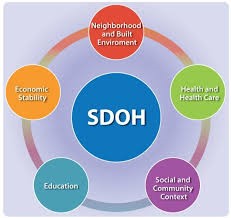Understanding of population-level data of mental health and wellbeing can shape public policy and practices in the future for better aggregate outcomes.
Mental wellbeing is a complex topic. A person’s mental wellbeing is not purely a factor of hardwired biology; it is also heavily influenced by life circumstances and experiences. Therefore, when we talk about improving mental wellbeing in populations, it is not enough to focus on medical treatments and support groups. We must also understand the factors that contribute to mental wellbeing on a more macro level.
Existing research shows that social, economic, or environmental factors that may contribute to poor mental health. However, a lack of data at the population level limits what we know about mental health at the community, state, and even national levels. As a result, we are not able to understand mental health across samples of broad populations that include the range from normal to clinical dysfunction.
Sapien Labs’ Mental Health Million Project is designed to address these and other data gaps. Using the Mental Health Quotient (MHQ), a powerful tool to understand overall mental wellbeing from clinical symptoms to positive aspects of mental function, we ask questions about a person’s demographics and life experiences. We are then able to build a dataset and analyze which social, economic, geographic, and other environmental factors contribute to population-level mental health.
Why Do We Need Population-Level Data?

Unlike many individual assessments, tools that collect population data ask critical questions about the social determinants of health. Social determinants of health (SDOH) are the conditions surrounding where a person lives, learns, works, and plays that can shape a person’s health and wellbeing. The diagram on the left, from Healthy People 2020, shows examples of SDOH factors that can impact health outcomes.
For example, multiple studies have shown that a person’s neighborhood can impact mental wellbeing. Neighborhoods with high noise levels, poor quality housing, and limited green space can all negatively affect mental wellbeing. Some communities, such as Joplin, Missouri, have intentionally incorporated more green space in their redevelopment plans to improve mental health outcomes in the community.
With more information about the social determinants of health, policymakers can design policies and programs to improve the wellbeing of entire communities.
Population data also allows policymakers to get creative with their solutions. For instance, say the MHQ finds that a group of occupations is associated with a higher risk for certain mental disorders. As a response, policymakers can create programs for these that can reduce the effect of the primary stressors related to their mental wellbeing. For example, there are programs available for child welfare workers to help them cope with secondary traumatic stress (STS). STS occurs when a person is repeatedly exposed to someone else’s traumatic experience.
Population data also gives us insight into factors that strengthen mental health in communities. Most diagnostic tools focus on a person’s negative symptoms, such as sadness, exhaustion, or trouble concentrating. However, individuals also have strengths that they can build on to improve their mental health, and the same is true for communities. Without information about both challenges and strengths, policymakers may miss the opportunity to develop strengths-based programs that promote wellbeing.
Affecting Change
The U.S. and other nations have a long history of using population data to improve the physical health and safety of residents. Seatbelt laws and anti-smoking campaigns successfully used population data to change people’s health behaviors on a national scale.
States have also used this type of data to address behavioral health issues. For instance, researchers in Colorado used population data to address the effect of the opioid crisis on rural communities. The analysis resulted in a new program called IT MATTRS. IT MATTRS provides training to rural healthcare professionals about medication-assisted treatment. Also, information about substance abuse resources in rural areas was placed on coasters at bars, bookmarks from the library, and church inserts in order to reach as many people as possible.
As Sapien Labs collects additional data, we will be able to analyze mental health and wellbeing through the lenses of age, gender, geography, occupation, aspects of life experience, and more. The data can help us understand the factors related to mental health and wellbeing from multiple angles. With this information, policymakers and community leaders can create robust policies to improve mental health on a global scale.


















